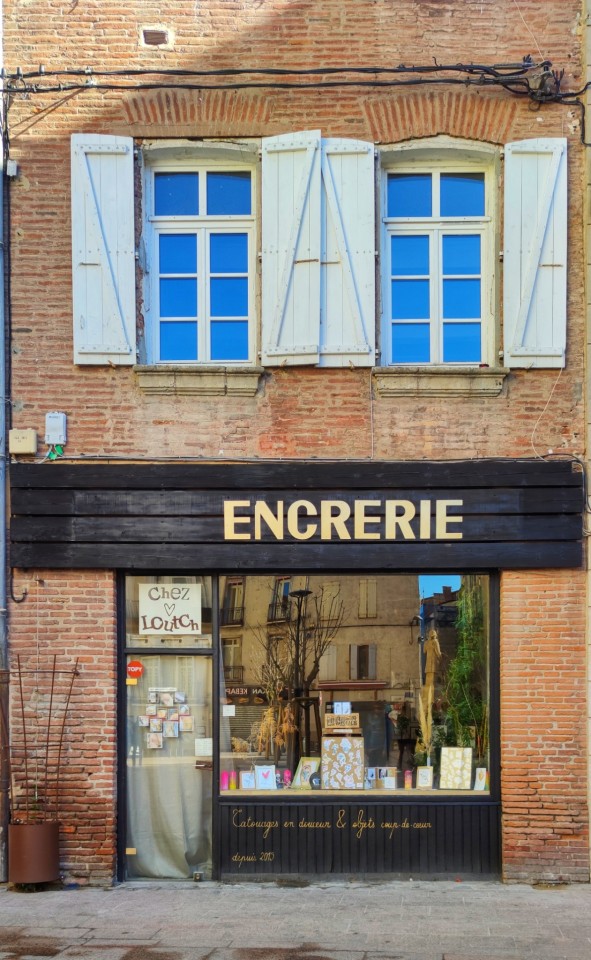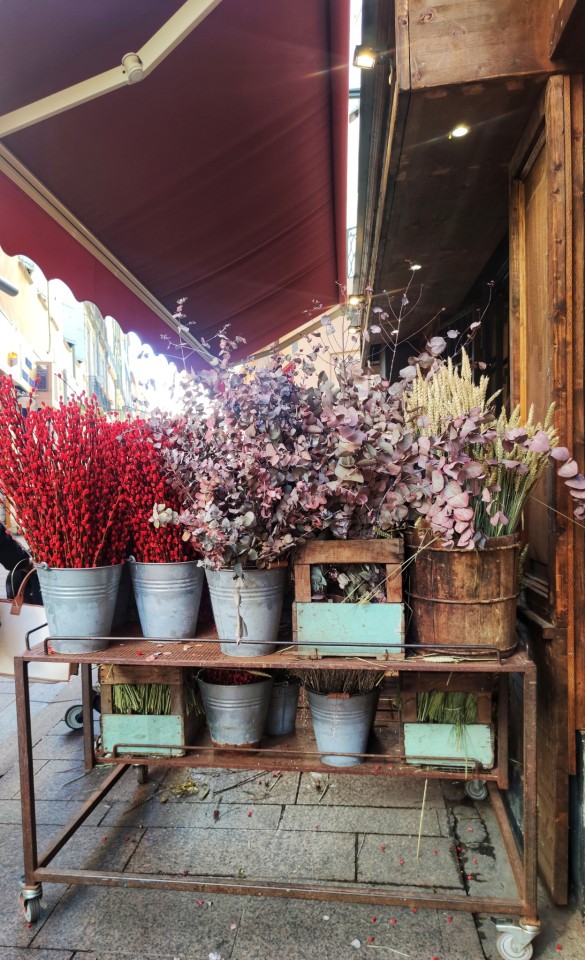Your personal Tumblr library awaits
Occitanie - Blog Posts

Something you don't see every year down South: ice! And not just a little, some proper icicles on this fountain on Place de la Trinité in Toulouse.

Plus a bit of snow sticking to the ground in the parks, as seen from the Natural History Museum.

Up the Monumental Stairs at Auch

Some 75 km West of Toulouse, the city of Auch is far away enough for red brick to be far less prevalent in buildings. It developed along the Gers river, with the higher-ups living... well, higher up.

The Monumental Stairs were built in the 1850s when, following a rebellion against Napoleon III's coup installing the Second French Empire, the prefect decided to give the townsfolk something to do (per the city council, "créer des chantiers afin de donner de l'ouvrage à ceux qui en manquent"), rather than just repress. The results were a water and gas distribution network, and the Monumental Stairs, creating a comfortable link between the upper town and the riverside 35 metres below. Later, a statue of d'Artagnan, a musketeer made famous by Alexandre Dumas novels, was added.

Behind d'Artagnan here, rises the Tour d'Armagnac, a 14th-century prison. Unfortunately, it is privately owned and cannot be visited, unlike the neighbouring cathedral, built between 1489 and 1680.

While the back of the cathedral, visible in the top photo, is clearly gothic, which fits the start of construction, the front facade is in a later, classical style. This would fit the timeline, as cathedral building usually started with the crypt and the altar, working outwards, and finishing with the massive entrance and towers. Walking away, further West, we encounter one more figure of the town: Intendant Mégret d'Étigny, who administrated the Auch-Pau area under King Louis XV, and is credited with infrastructure improvements in the region at the time.

Gimont

During my only winter down South, way back when I'd do road trips (solo of course), I set out from Toulouse for a day to visit Auch, with a break in the countryside each way, partly to admire the snow on the Pyrenees. This first picture was taken on the outbound leg, and I forget where it was.

On the return leg, I stopped at Gimont, possibly drawn in by the distinctive church. There is also a Cahuzac Chapel next to the town, which gets a laugh because it has the same name as a former budget minister who was convicted for tax evasion. The shameless git even tried to run for Parliament again once his ineligibility sentence was served. Same name, but no relation, I should stress.

Like a lot of places in this corner of France, there are a lot of brick buildings in Gimont, and some peculiar traditional structures, like the Halle covered market. Inexplicably, a road runs through it.

The town also boasted a world-class motocross track, which hosted rounds of the 250cc World Championship in 1985 and 1990. But in 2019, so not long after my visit, the land owner wanted their turf back, and the Gimont Moto Club has since been looking for another location to open a new circuit. Here's how it rode:
Moissac: home to the world's best grapes (IMO)

Located on the river Tarn in southwestern France, Moissac is most famous for its grapes, specifically Chasselas. This green, sweet and thin-skinned grape is just marvellous, my personal favourite, and Chasselas de Moissac season is a sure sign that Autumn is nearly here.

When I saw that Moissac wasn't too far from where I was living at the time, of course I had to visit, and as the photos demonstrate, it was well worth the trip on a sunny, unseasonably warm early November day (I ate lunch on the terrace at the restaurant, that's insane for November!).

The heart of the town is its 11th-century Romanesque abbey. The monks there had a vineyard to tend to (what else?), and as the railways and tourism developed in the 19th century, Moissac envisioned becoming a "uval resort", in the same vein as thermal or seaside resorts, only with grapes as the centre theme. A full uval complex didn't come to fruition, but the local grapes began to be transported out of the region for the rest of France to appreciate. Cheers!

The Montech water slope

At around the same time as the "Inclined Plane" of Saint-Louis-Arzviller, other types of boat lifts were being engineered in other places. One of these was the Montech water slope, situated in Southern France on the Canal Parallel to the Garonne (Canal Latéral à la Garonne), the canal from Toulouse to Bordeaux which most people would probably refer to as the Canal du Midi - a better-known term though strictly speaking, the Canal du Midi is only the section from Toulouse to the Mediterranean.

From what I can garner, the two-headed vehicle used on this slope is a conjoining of two Diesel railcars built by Soulé in the early 70s, running on tyres and featuring a daunting-looking shield. This shield would be lowered behind a boat, and the machine would travel up and down the slope, carrying along the boat and the water it bathed in!
However, the performance of this system is less impressive than the Inclined Plane. It bypasses 5 locks, and saves 45 minutes of travel time. That's not nothing, but if you arrived at an end and just missed the train, then going straight to the locks wasn't going to be much longer than waiting for the next one. Also, far more power is required to make this work (I'm reading 1000 hp motors, versus 125 hp for the Inclined Plane), and it's Diesel.

These photos were taken in late 2017, 8 years after the water slope closed. It was only serving leisure boats by then, and, as I've insinuated, it wasn't very economical to run. As far as I can tell, the 5 locks beside it never closed, and are in use today.
The slope and its tractor have since been renovated, and the site's current state can be seen in a Tim Traveller video published in 2021.




Francia 2024